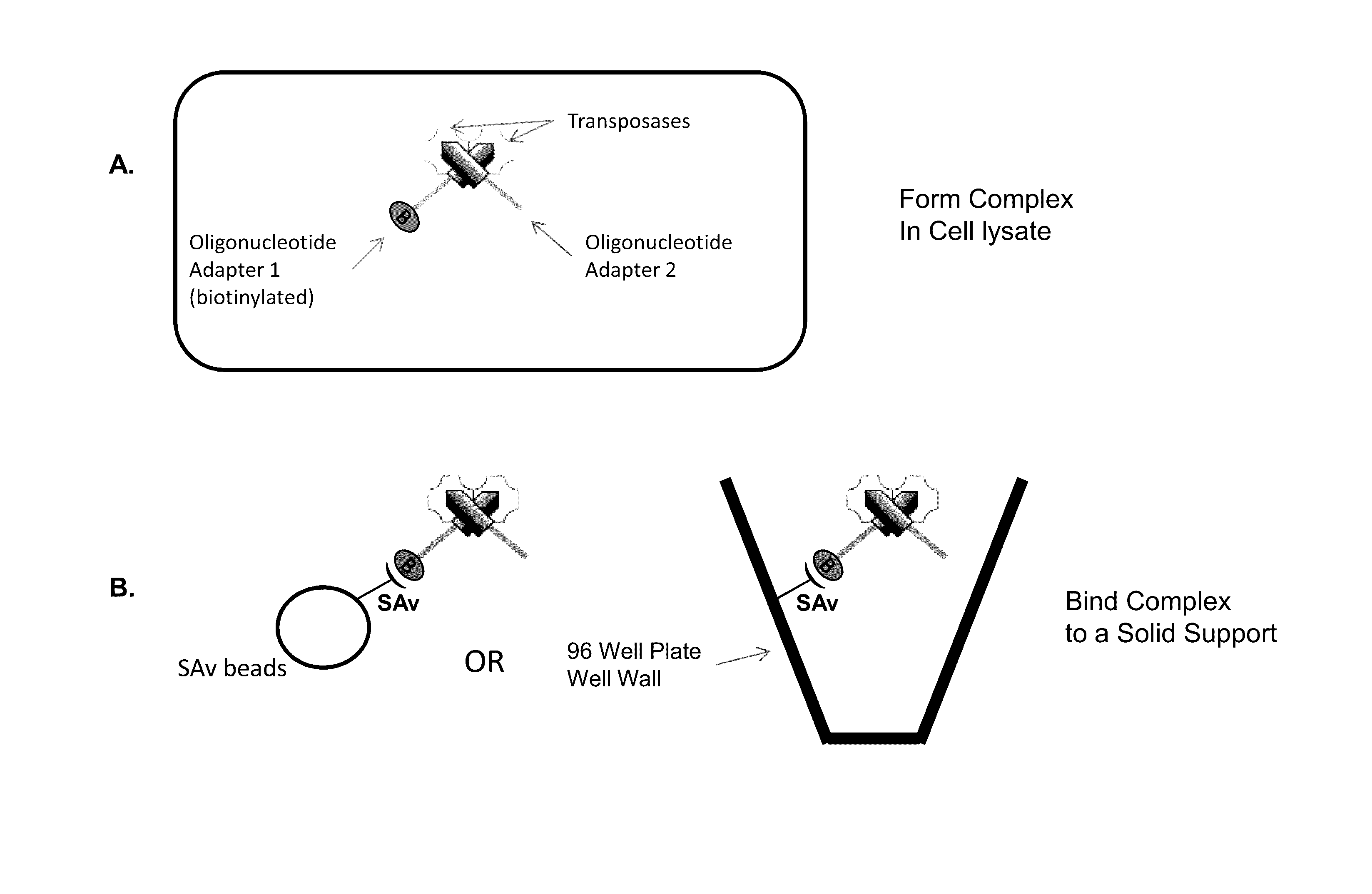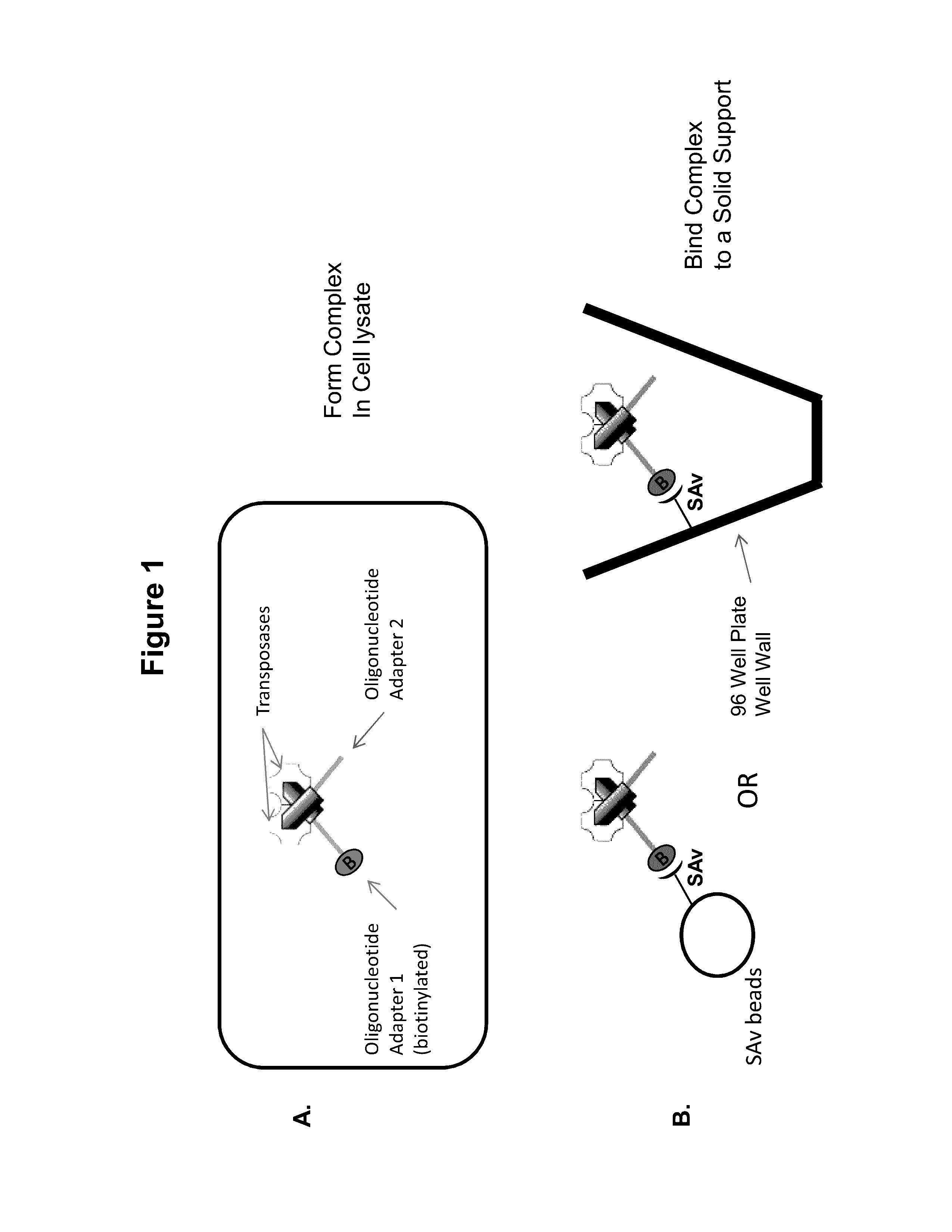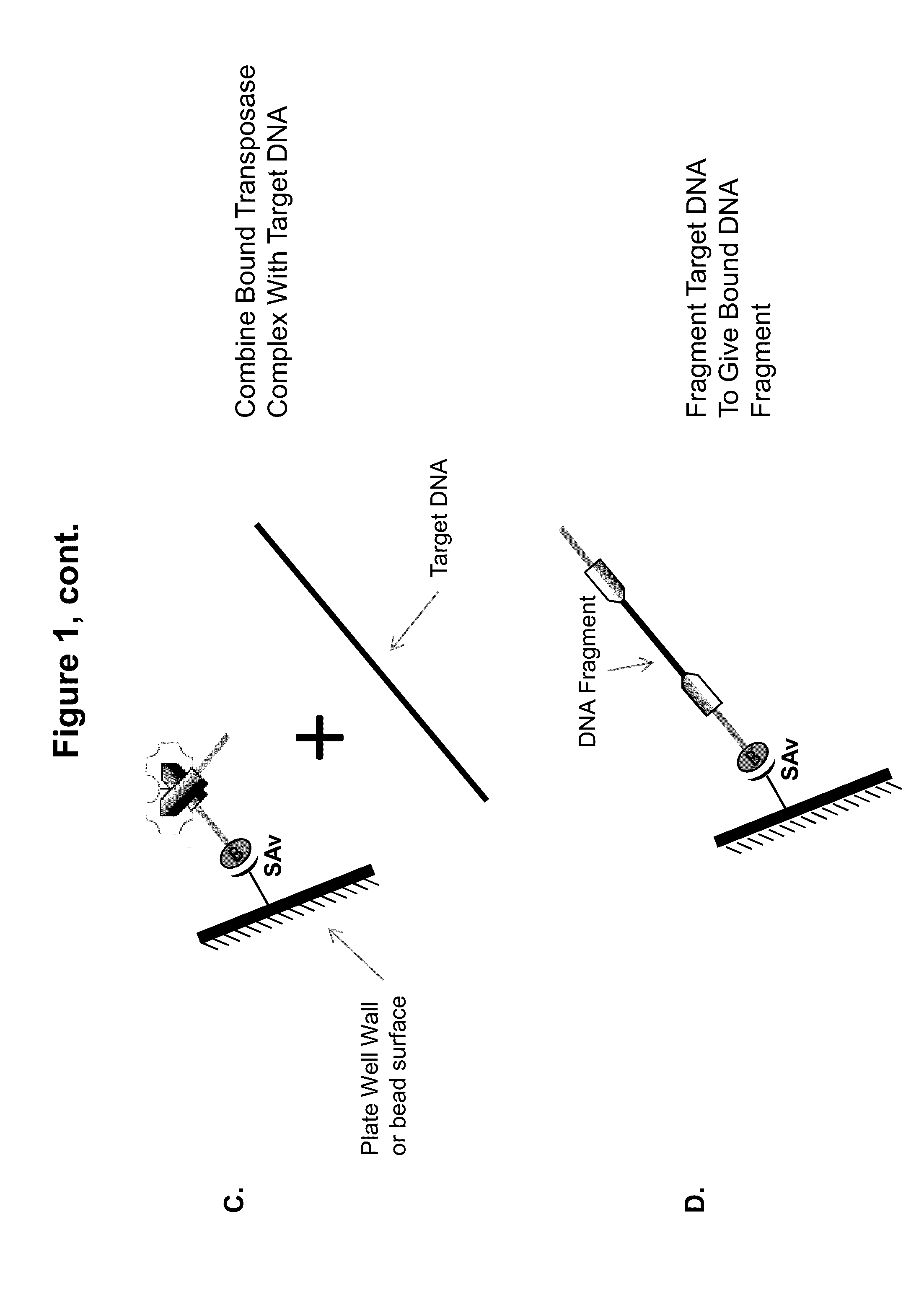Immobilized Transposase Complexes For DNA Fragmentation And Tagging
a transposase complex and dna fragmentation technology, applied in the field of molecular biology, can solve the problems of insufficient or too extensive dna fragmentation, laborious and multi-stage process of shearing, and high cost of instruments, and achieve superior properties and characteristics of dna fragmentation, improve activity, and improve the effect of transposase-mediated dna fragmentation system
- Summary
- Abstract
- Description
- Claims
- Application Information
AI Technical Summary
Benefits of technology
Problems solved by technology
Method used
Image
Examples
example
[0075]The invention will be further explained by the following Example, which is intended to be purely exemplary of the invention, and should not be considered as limiting the invention in any way. Furthermore, it is to be understood that not all of the process steps that are disclosed in this Example need be practiced to practice all aspects of the invention, and that some additional steps, as discussed above, can be practiced. For example, where the practitioner desires to obtain purified transposase complexes, the process steps discussed below relating to amplification of target DNA and sequencing of the amplified fragments need not be performed, but a step in which release of the complex from the solid support can be practiced instead. The skilled artisan will recognize where the process described below can be modified, based on the disclosure above and the knowledge held by that artisan, to arrive at different aspects of the present invention.
[0076]Sample Preparation for Sequen...
PUM
| Property | Measurement | Unit |
|---|---|---|
| temperature | aaaaa | aaaaa |
| temperature | aaaaa | aaaaa |
| pH | aaaaa | aaaaa |
Abstract
Description
Claims
Application Information
 Login to View More
Login to View More - R&D
- Intellectual Property
- Life Sciences
- Materials
- Tech Scout
- Unparalleled Data Quality
- Higher Quality Content
- 60% Fewer Hallucinations
Browse by: Latest US Patents, China's latest patents, Technical Efficacy Thesaurus, Application Domain, Technology Topic, Popular Technical Reports.
© 2025 PatSnap. All rights reserved.Legal|Privacy policy|Modern Slavery Act Transparency Statement|Sitemap|About US| Contact US: help@patsnap.com



